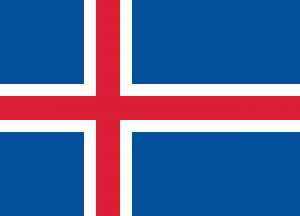Language/Icelandic/Grammar/Definite-and-Indefinite-Articles
Icelandic has two types of articles, definite and indefinite. Articles are words that are used with a noun to indicate the type of reference being made by the noun. Definite articles indicate a specific noun while indefinite articles indicate a general noun. Understanding the correct usage of definite and indefinite articles is important in Icelandic sentence structure.
Definite Articles
In Icelandic, definite articles are used before each noun that is specified, known, or familiar within the conversation. Definite articles are not used when we are talking in generalities. Although the Icelandic language does not have the concept of gender, the use of the definite article is determined by whether the modified word is a singular or plural noun. Definite articles are also declined according to noun cases.
Below you will find a table with the most common definite articles in Icelandic:
| Icelandic | Pronunciation | English |
|---|---|---|
| Hinn | Hinn | The (singular masculine) |
| Hin | Hin | The (singular feminine) |
| Hitt | Hit | The (singular neuter) |
| Hinir | Hinir | The (plural masculine) |
| Hinar | Hinar | The (plural feminine) |
| Hin | Hin | The (plural neuter) |
Here are some examples of definite articles in use:
- Ég þekki hestinn. (I know the horse.)
- Konan er heima. (The woman is home.)
- Drengirnir eru í skólanum. (The boys are at school.)
In all of these examples, we are talking about specific horses, a specific woman, and specific boys.
Indefinite Articles
In Icelandic, indefinite articles are used to refer to a general aspect of a noun rather than a specific one. Indefinite articles are not declined according to noun cases. As with definite articles, the use of indefinite articles is determined by whether the modified word is a singular or plural noun.
Below you will find a table with the most common indefinite articles in Icelandic:
| Icelandic | Pronunciation | English |
|---|---|---|
| Ein | Ein | A (singular masculine and neuter) |
| Eitt | Eit | A (singular neuter) |
| Ei | Ei | A (singular feminine) |
Here are some examples of indefinite articles in use:
- Ég hef keypt einn hest. (I have bought a horse.)
- Ég á eitt ljós. (I have a light.)
- Hún kaupir ei bíl. (She's buying a car.)
In all of these examples, we are talking about a general horse, a general light, and a general car.
Definite vs Indefinite Articles
The difference between definite and indefinite articles can be complex, especially for non-native speakers. In general, using the definite article draws attention to something specific, while the indefinite article does not specify anything in particular, but instead refers to something in general. It is important to use the correct article in order to convey your intended meaning.
Here are some examples contrasting the use of definite and indefinite articles:
- Ég á lauginn. (I have the swimming pool.)
- Ég á laug. (I have a swimming pool.)
- Ég datt á gólfið. (I fell on the floor.)
- Ég datt á gólf. (I fell on a floor.)
As you can see, in the first example, we are talking about a specific, known swimming pool, while in the second example, we are talking about a general swimming pool. Similarly, in the third example, we are talking about a specific, known floor, while in the fourth example, we are talking about a general floor.
It's important to note that in Icelandic, the definite article can sometimes be used in place of a possessive pronoun. For example, instead of saying "minn vinkill" (my friend), we can say "vinurinn minn" (my friend).
Conclusion
Understanding the difference between definite and indefinite articles is a crucial aspect of learning Icelandic grammar. Make sure to use the right article for each noun, as it can have a significant impact on the meaning of the sentence. Practice using definite and indefinite articles in your everyday conversation and writing to become more comfortable with their correct usage. With time and practice, these concepts will become second nature to you.
Other Lessons
- Adjective Agreement
- Plurals
- Personal Pronouns
- Adverbs Formation
- Verbs
- Prepositions
- Prepostitions
- Negation
- Conditional Mood

